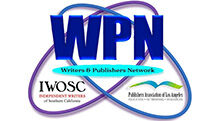 by Bobbie Christmas
by Bobbie Christmas
Creative writers know to avoid clichés, but how can we recognize a cliché? And what’s the difference between an idiom and a cliché?
First, all idioms are clichés, but not all clichés are idioms. Confused? Okay, first let’s go with a definition of an idiom: An idiom is a phrase that has a meaning that can’t be derived from the words themselves. Here are a few typical idioms:
- Up in the air (undecided)
- Skeletons in the closet (secrets)
- Bite the bullet (get the inevitable over with)
- Break a leg (good luck)
- Costs an arm and a leg (pricey)
- Piece of cake (easy)
- Walk on eggshells (be extremely cautious about one’s words or actions)
- Walks on water (able to perform superhuman feats)
- That’s bananas (that’s crazy)
- Kick the bucket (die)
Idioms are figurative phrases not meant to be taken literally, whereas direct language is clear and won’t confuse readers. Native-born Americans may understand most idioms, but not all our readers are native born.
I’m reminded of a perfect illustration. A Japanese friend learning English came to me with a list of phrases she did not understand. After I explained every idiom on her list, I asked where she heard all those phrases. She said she saw them in a memoir she was reading. For a person struggling to learn English, she was at a loss to understand idioms.
I grew up reading William Safire’s columns and books. He was not only a columnist and a journalist but also a presidential speechwriter. His columns often addressed the interesting origins of one or two idioms, even while he advocated avoiding them. The problem with idioms is twofold. Not only do they not make sense if taken literally, but they also are clichés.
What is a cliché? It’s any phrase you’ve seen or heard before. Strong writing stands on its own without leaning on anything others have written or said.
Many clichés take the form of similes, such as these examples:
- Quiet as a mouse
- Sly like a fox
- Smart as a whip
- Fit as a fiddle
Other clichés are old sayings like these:
- Lived happily ever after
- Little did he know
- The calm before the storm
- All’s well that ends well
- Without warning
- It all started…
Some clichés are just wordy phrases, as in these examples:
- Cried (or shook) uncontrollably (Most of us don’t shake controlably anyway.)
- Stood there and…/Sat there and… (“There” is superfluous.)
All these sayings, idioms, and clichés may have seemed clever when someone first thought of them, but after being overused they became worn out.
People often speak in clichés, though, so some idioms may be appropriate when quoting someone in nonfiction or creating dialogue for fiction. Regardless, let me reveal a trick I used as a journalist. When I interviewed a person who responded to a question with a cliché, I rephrased the question or tried another tactic to get a better answer. For example, if my subject said, “I was on pins and needles before I made the call,” I might inquire, “You were nervous?” The interviewee’s next answer would often be more quotable, perhaps something like this: “Yes, I was shaking when I dialed the phone.” There! “I was shaking when I dialed the phone” is a better, more easily interpreted quote.
What about when you aren’t quoting someone or creating dialogue? Everything that is not a quote and not dialogue is narrative, and narrative should be devoid of clichés and idioms. The only exception might be when a main character in a novel is also the narrator, as in the case of Catcher in the Rye, which is narrated by a teenage boy.
In conclusion, strong writing avoids phrases others have used. The result? Fresh, clear prose.
Bobbie Christmas, book editor, author of Write In Style: Use Your Computer to Improve Your Writing, and owner of Zebra Communications, will answer your questions, too. Send them to Bobbie@zebraeditor.com. Read more Ask the Book Doctor questions and answers at www.zebraeditor.com.
